The Reserve Bank of New Zealand has cut the official cash rate (OCR) by 2.5% since July 2024, taking the OCR down to 3.0% from a peak of 5.5%.
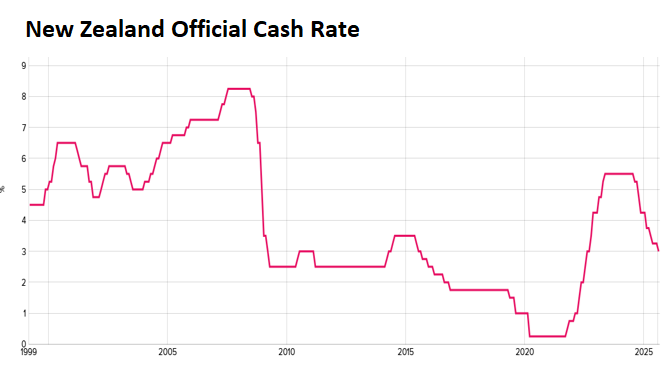
The Reserve Bank has slashed rates so aggressively due to the pervasive weakness of the New Zealand economy.
In particular, New Zealand’s labour market has suffered from significant retrenchment.
Antipodean Macro’s Justin Fabo shows below how New Zealand’s unemployment rate increased by 0.1% to 5.2% in the second quarter of 2025. This compares to 4.7% in Q2 2024. The underutilisation rate has also risen by 3.5% over the same period to 12.8%.
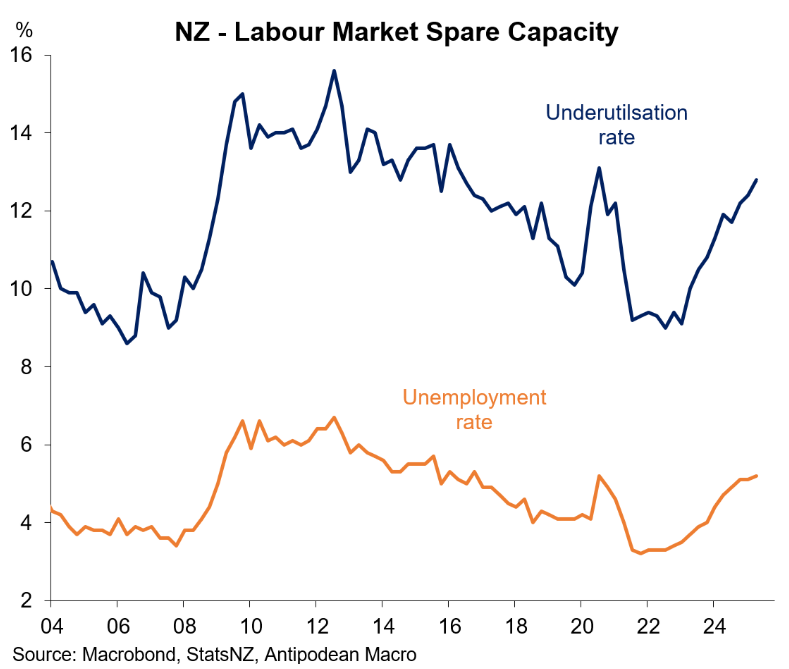
On Tuesday, Statistics New Zealand released filled jobs data for the June quarter, which fell by 0.5% over the quarter and by 1.7% year-on-year.
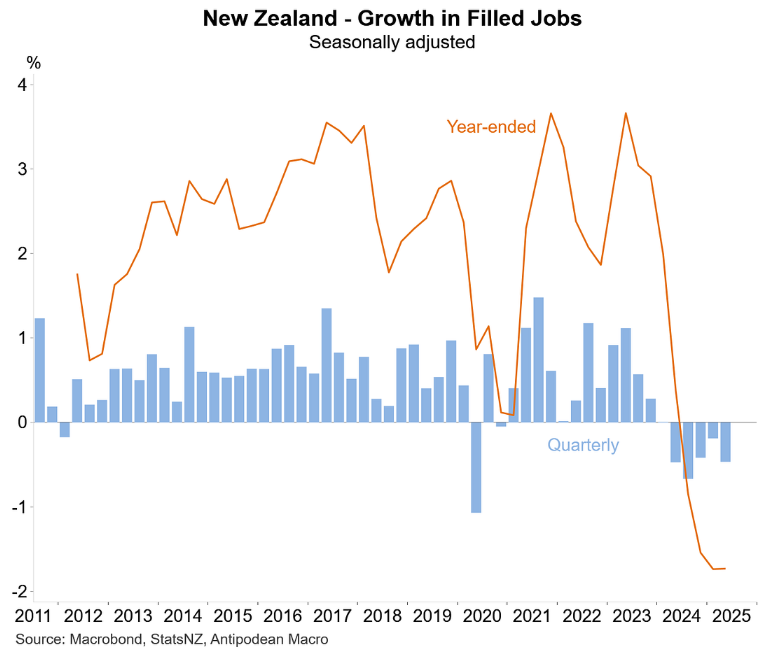
As shown above by Justin Fabo, the number of filled jobs in New Zealand has declined for an unprecedented five consecutive quarters.
New Zealand wage growth has also tanked amid the oversupply of workers.
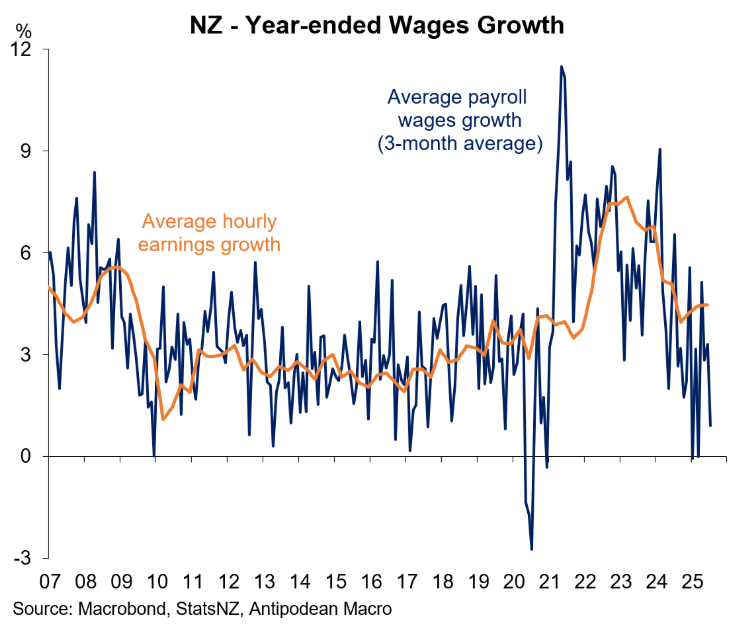
The August Monetary Policy Statement from the Reserve Bank projected “the unemployment rate to increase slightly further in the near term, before decreasing over the projection in line with the recovering output gap”.
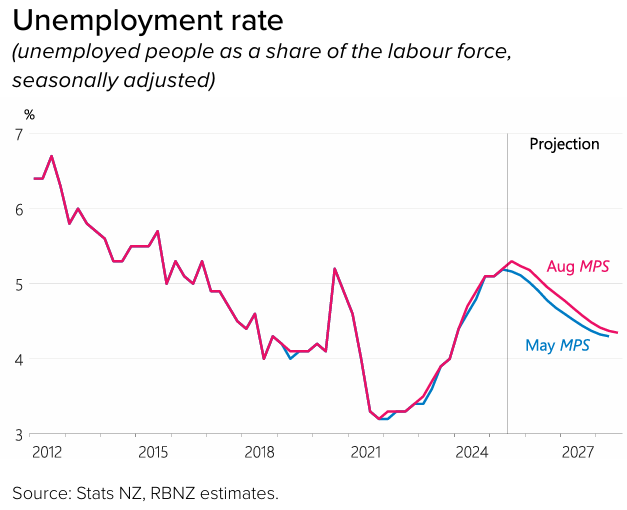
However, ANZ Senior Economist Miles Workman warned last month that New Zealand’s unemployment rate could rise to 6% in coming months if employers stopped hoarding workers.
“Firms appear to have been hoarding labour in anticipation of an eventual economic recovery. We estimate this has kept the unemployment around 0.5% pts lower than otherwise in recent quarters”, Workman wrote.
“If the recovery doesn’t materialise with the gusto firms have been anticipating, the labour market could be hit with a double whammy: weaker-than-otherwise demand for labour and a shedding of hoarded labour”.
If firms are forced to “right-size” their workforces, and New Zealand’s unemployment rate rises toward 6% (versus the peak of 5.3% forecast by the Reserve Bank), then Workman believes the OCR would need to be lowered below 2.5% to avoid inflation falling below the Reserve Bank’s 1% to 3% target band.

